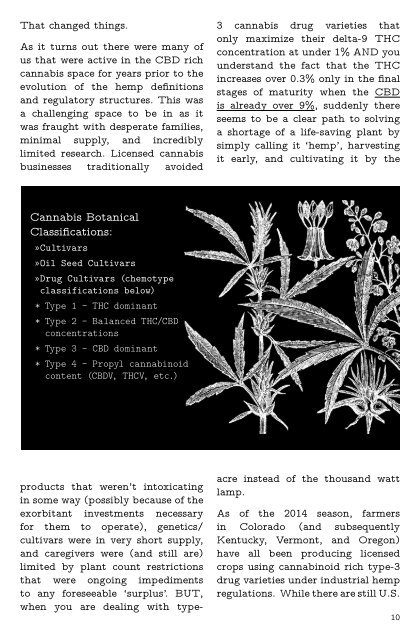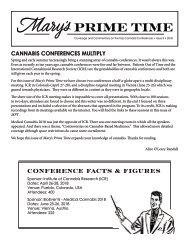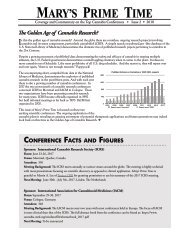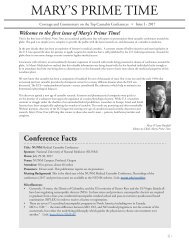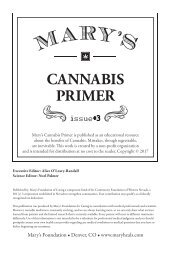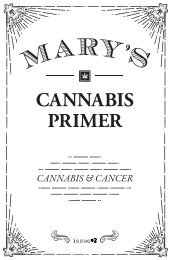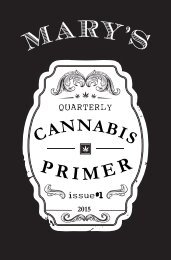#5: It's a Hemp Thing
Mary's Cannabis Primer is published as a resource for national and international education about the benefits of Cannabis. This issue is dedicated to Hemp.
Mary's Cannabis Primer is published as a resource for national and international education about the benefits of Cannabis. This issue is dedicated to Hemp.
Create successful ePaper yourself
Turn your PDF publications into a flip-book with our unique Google optimized e-Paper software.
That changed things.<br />
As it turns out there were many of<br />
us that were active in the CBD rich<br />
cannabis space for years prior to the<br />
evolution of the hemp definitions<br />
and regulatory structures. This was<br />
a challenging space to be in as it<br />
was fraught with desperate families,<br />
minimal supply, and incredibly<br />
limited research. Licensed cannabis<br />
businesses traditionally avoided<br />
3 cannabis drug varieties that<br />
only maximize their delta-9 THC<br />
concentration at under 1% AND you<br />
understand the fact that the THC<br />
increases over 0.3% only in the final<br />
stages of maturity when the CBD<br />
is already over 9%, suddenly there<br />
seems to be a clear path to solving<br />
a shortage of a life-saving plant by<br />
simply calling it ‘hemp’, harvesting<br />
it early, and cultivating it by the<br />
Cannabis Botanical<br />
Classifications:<br />
»Cultivars »<br />
»Oil » Seed Cultivars<br />
»Drug » Cultivars (chemotype<br />
classifications below)<br />
* Type 1 – THC dominant<br />
* Type 2 – Balanced THC/CBD<br />
concentrations<br />
* Type 3 – CBD dominant<br />
* Type 4 – Propyl cannabinoid<br />
content (CBDV, THCV, etc.)<br />
products that weren’t intoxicating<br />
in some way (possibly because of the<br />
exorbitant investments necessary<br />
for them to operate), genetics/<br />
cultivars were in very short supply,<br />
and caregivers were (and still are)<br />
limited by plant count restrictions<br />
that were ongoing impediments<br />
to any foreseeable ‘surplus’. BUT,<br />
when you are dealing with type-<br />
acre instead of the thousand watt<br />
lamp.<br />
As of the 2014 season, farmers<br />
in Colorado (and subsequently<br />
Kentucky, Vermont, and Oregon)<br />
have all been producing licensed<br />
crops using cannabinoid rich type-3<br />
drug varieties under industrial hemp<br />
regulations. While there are still U.S.<br />
10


